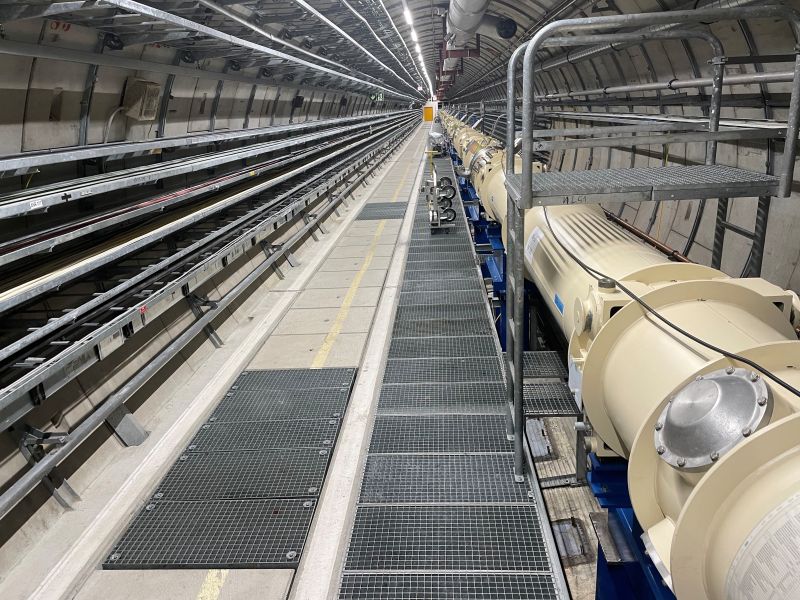Measurement of Vacuum Magnetic Birefringence using the ALPS II Magnet String

The theory of quantum electrodynamics remains a remarkably accurate description of the electrodynamic interactions as more and more of its predictions are experimentally verified. One of its predictions, the vacuum magnetic birefringence (VMB) effect, has proven to be elusive even after physicists have spent over 40 years searching for it. In the presence of a magnetic field, VMB will cause a change in the index of refraction of vacuum such that it exhibits a slight birefringence of 4×10-24 T-2B2, with B being the strength of the magnetic field in Tesla. The critical figure of merit for VMB experiments is B2L where L is the length of the magnetic field. With magnets capable of producing 5.3 T magnetic fields over a 212 m length, the ALPS II magnet string will have a B2L almost 600 times larger than the current leading VMB experiments. These experiments also try to amplify the effect using optical cavities and then perform the measurement with laser interferometry. As it is already operating long baseline optical cavities and equipped with the infrastructure and hardware to perform laser interferometric measurements, the ALPS II laboratory is an ideal venue to try to observe VMB. To increase the measured signal above the background the magnetic field must be modulated. One of the challenges a VMB measurement using the ALPS II magnet string will face is that it will only be able to modulate the magnetic field at frequencies of 1 mHz and below, much lower than that of its competitors.
With the support from the PIER seed fund, we will build a setup to investigate noise sources in this frequency regime. This study will inform the design of a dedicated experiment to measure VMB using the ALPS II infrastructure, once data taking for ALPS II is completed.




